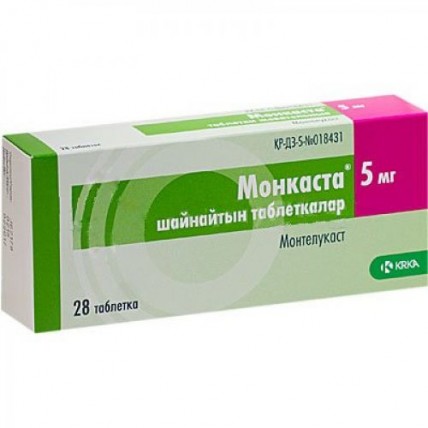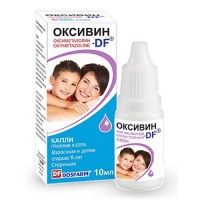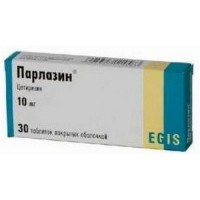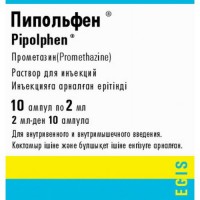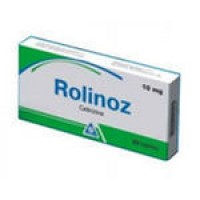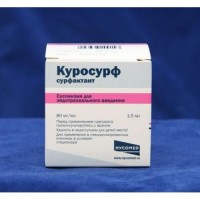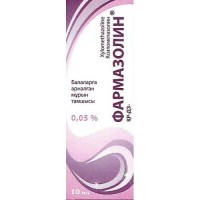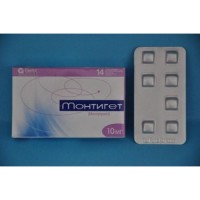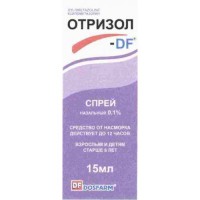Monkasta 5 mg 28's chewing tablets
- $29.00
The instruction for medical use of Monkasta® medicine the Trade name of Monkasta® the International unlicensed name Montelukast Dosage Form chewable tablets, 4 mg and 5 mg Structure One tablet contains active agent – montelukast of sodium of 4.16 mg (it is equivalent to montelukast of 4 mg) or 5.2 mg (it is equivalent to montelukast of 5 mg), excipients: Mannitolum, cellulose microcrystalline, sodium of a kroskarmelloz, hydroxypropyl cellulose, aspartame, ferrous oxide red (E172), fragrance cherry, magnesium stearate. The description of the Tablet of round shape, pink color with impregnations, slightly biconvex, with marking 4 on one party and a facet (for a dosage of 4 mg). Tablets of round shape, pink color with impregnations, slightly biconvex, with marking 5 on one party and a facet (for a dosage of 5 mg). Pharmacotherapeutic group Drugs for treatment of obstructive respiratory diseases. Other drugs drugs for treatment of obstructive respiratory diseases for system use. Leukotriene receptors antagonists. Montelukast. The ATX R03DC03 code the Pharmacological Pharmacokinetics Absorption Montelukast properties is quickly absorbed after oral administration. For tablets, film coated, on 10 mg, average maximum concentration (Cmax) in blood plasma was reached in 3 hours (Tmax) after drug use by adults on an empty stomach. The average bioavailability at oral administration is 64%. Intake of usual food did not affect bioavailability at oral administration and on Cmax. Safety and efficiency were confirmed in clinical trials at use of tablets, film coated, 10 mg, irrespective of meal. For chewable tablets, on 5 mg, Cmax was reached in 2 hours after reception on an empty stomach at adults. The average bioavailability at oral administration was 73% and decreased to 63% at reception with standard food. After intake of chewable tablet of 4 mg by patients from 2 to 5 years on an empty stomach Cmax is reached in 2 hours. Averages of Cmax are 66% higher, and average Cmin below, than to the adults receiving 10 mg of a tablet. Distribution Montelukast more than for 99% contacts proteins of blood plasma. The volume of distribution of montelukast in an equilibrium state averages 8-11 liters. Researches using radioactive and marked montelukast indicate the minimum distribution at penetration through a blood-brain barrier. Besides, concentration of radioactive and marked substance in 24 hours after reception of a dose were minimum in all other fabrics. Metabolism Montelukast is actively metabolized. In researches at use of therapeutic doses, concentration of metabolites of montelukast are in blood plasma below a detection limit at an equilibrium state at adults and children. Metabolism of montelukast happens, mainly, by means of the system of P450 2C8 cytochrome. Small impact is had CYP 3A4 and 2C9 though when assigning an itrakonazol which is CYP3A4 inhibitor montelukast pharmacokinetics at the healthy volunteers receiving montelukast of 10 mg of 1 times/days did not change. Clinical trials of microsomes of a liver of the person of in vitro showed that therapeutic concentration of montelukast in blood plasma do not inhibit P450 3A4, 2C9, 1A2, 2A6, 2C19 or 2D6 cytochromes. The role of metabolites in therapeutic effect of montelukast is minimum. Removal Plasma clearance of montelukast at healthy adults makes, on average, 45 ml/min. After oral administration it is radioactive marked montelukast of 86% of radioactivity it is removed for 5 days with a stake and & lt, 0.2% is removed with urine. Considering bioavailability of montelukast after oral administration, it indicates that montelukast and its metabolites are removed, almost completely, with bile. Feature of pharmacokinetics various groups of patients have no need for dose adjustment at patients of advanced age or in an abnormal liver function from easy to moderate severity. Researches with participation of patients with renal failures were not conducted. As montelukast and its metabolites are removed with bile, it is not supposed that patients will have necessary a dose adjustment of montelukast with renal failures. Patients have no data on montelukast pharmacokinetics with a severe form of an abnormal liver function (& gt, 9 on a scale of Chayld-Pyyu). At use of high doses of montelukast (in 20 and 60 times exceeding the recommended dose for adults) decrease in concentration of theophylline in blood plasma was observed. This effect was not observed at use of drug in the recommended dose of 10 mg of 1 times a day. A pharmacodynamics Cysteic leukotrienes (LTC4, LTD4, LTE4) are inflammation eicosanoids which are emitted from various cells, including mast cells and eosinophils. The effect of these pro-asthmatic mediators is carried out through cysteic leukotriene receptors (CysLT) which are present at airways of the person and shown by a bronchospasm, mucifying, increase in permeability of vessels and migration of eosinophils. Montelukast is active connection which competitively ties CysLT1-receptors with sharp selectivity and chemical affinity. Clinical trials established that montelukast suppresses the bronchospasm caused by inhalation of LTD4 even when assigning in a dose of 5 mg and causes a bronkhodilatation within 2 hours after intake. Montelukast also has additive effect on effect β-agonists. Treatment by montelukast suppresses a bronchospasm both on early, and on late stages, reducing reaction to antigens. Treatment by montelukast considerably reduces quantity of eosinophils in airways (it is confirmed with the analysis of a phlegm) and in peripheral blood, improving control over a clinical course of bronchial asthma. Indications For a dosage of 4 mg - addition to basic therapy of bronchial asthma for children of 2 - 5 years with persistent asthma easy and moderate severity at insufficient clinical effect of treatment by inhalation corticosteroids and β-agonists of short action on demand - an alternative way of treatment of asthma at children of 2 - 5 years instead of low doses of inhalation corticosteroids at patients with persistent asthma of easy degree (without the serious attacks of bronchial asthma demanding reception of oral corticosteroids) - prevention of the attacks of a bronchospasm connected with physical activities For a dosage of 5 mg - addition to basic therapy of bronchial asthma for children from 6 years with persistent asthma easy and moderate severity at insufficient clinical effect of treatment by inhalation corticosteroids and β-agonists of short action on demand - treatment of aspirinchuvstvitelny patients with bronchial asthma and prevention of the bronchospasm caused by physical activity - treatment of allergic rhinitises at patients with bronchial asthma the Route of administration and doses Children need to take medicine only under control of adults. Tablets have to be chewed before swallowing. The dose for children aged from 2 up to 5 years makes 1 chewable tablet of 4 mg of 1 times a day, in the evening. The dose for children aged from 6 up to 14 years makes 1 chewable tablet of 5 mg of 1 times a day, in the evening. The drug Monkasta® should be taken in 1 hour prior to meal or in 2 hours after a meal. There is no need for dose adjustment for these age groups. The general recommendations Therapeutic effect of the drug Monkasta® with change of indicators of a course of bronchial asthma develops within 1 day. Patients should report that it is necessary to continue Monkasta's reception even if will reach control of asthma and also during the periods of deterioration in a course of asthma. There is no need for dose adjustment for patients with a renal failure or with abnormal liver functions from easy to moderate severity. There are no data on patients with a severe form of an abnormal liver function. A dosage for boys and girls identical. Монкаста® as an alternative method of treatment instead of low doses of inhalation corticosteroids in persistent asthma of light severity of Monkasta® it is not recommended as monotherapy for patients with persistent asthma of moderate severity. Montelukast use as an alternative to low-dose inhalation corticosteroids for children with persistent asthma of light severity should be considered only for patients who had no serious attacks of asthma demanding use of oral corticosteroids and who are not capable to use inhalation corticosteroids lately. Persistent asthma of light severity is defined as emergence of symptoms of asthma more often than once a week, but less than once a day, emergence of night symptoms more often than 2 times a month, but less than once a week, normal function of lungs in the periods between episodes. If to control visit of sufficient control of asthma it is not reached (usually for 1 month), it is necessary to define need for additional or other anti-inflammatory therapy, based on the consecutive system of treatment of asthma. It is necessary to estimate periodically a condition of patients concerning control of asthma. Treatment by Monkasta depending on other methods of treatment of asthma. If Monkasta is applied as additional therapy at treatment by inhalation corticosteroids, it is not necessary to replace with the drug Monkasta® inhalation corticosteroids sharply. For children at the age of 15 years is also more senior and for adults tablets, film coated, in a dosage of 10 mg are issued. Side effects Often (≥1/100 & lt, 1/10) - a headache - thirst - abdominal pain Post-marketing data Very often (≥1/10) - upper respiratory tract infections * it is frequent (≥1/100 & lt, 1/10) - diarrhea **, nausea **, vomiting ** - rash ** - increase in level of transaminases (ALT and nuclear heating plant) - a pyrexia * Infrequently (≥1/1000 & lt, 1/100) - reactions of hypersensitivity, including an anaphylaxis - pathological dreams, including dreadful dreams, insomnia, a sleep-walking, excitement, agitation, including aggression and hostility, the depression, psychomotor hyperreactivity, including irritability, a bespokoynost, a tremor *** - dizziness, drowsiness, a paresthesia/hypesthesia, spasms - nasal bleeding - dryness in a mouth, dyspepsia - bruises, urticaria, an itching - an arthralgia, myalgia, including muscular spasms - asthenia/fatigue, hypostasis - enuresis in children Seldom (≥1/10000 & lt, 1/1000) - tendency to bleeding - disturbance of concentration of attention, a dysmnesia - palpitation - a Quincke's disease Very seldom (& lt, 1/10000) - eosinophilic infiltrates in a liver - hallucinations, a disorientation, suicide intentions and behavior (including attempts of a suicide) - Cherdzha-Stross's syndrome - hepatitis, including cholestatic, hepatocellular and damages of a liver of the mixed genesis - a multiformny erythema, a nodal erythema * These by-effects occurred very often as in the patients accepting montelukast and in group of the patients accepting placebo in clinical trials. ** These by-effects met often as at the patients accepting montelukast and in group of the patients accepting placebo in clinical trials. *** Met frequency seldom of the Contraindication - hypersensitivity to active ingredient or to any of excipients - pregnancy and the period of a lactation - phenylketonuria - to children up to 2 years, at use of tablets of 4 mg - to children up to 6 years, at use of tablets of 5 mg the Medicinal interactions Montelukast can be applied with other drugs which are usually used for prevention and long-term treatment of asthma. In researches of interactions with other drugs the recommended clinical dose of montelukast had no clinically significant effect on pharmacokinetics of the following medicines: theophylline, Prednisonum, Prednisolonum, oral contraceptives (ethinylestradiol / norethindrone 35/1), terfenadin, digoxin and warfarin. The area under a curve concentration time (AUC) in blood plasma of montelukast decreased approximately by 40% at patients who at the same time applied phenobarbital. As montelukast is metabolized by means of CYP 3A4, 2C8 and 2C9 it is necessary to appoint with care montelukast, especially to children, along with inductors CYP 3A4, 2C8 and 2C9 such as Phenytoinum, phenobarbital and rifampicin. The researches in vitro showed that montelukast is strong CYP inhibitor 2C8. However data of clinical trials of interactions with drugs in which use of montelukast and a rosiglitazon was studied (marker substrate, the representative of the drugs which are metabolized mainly by means of CYP 2C8) showed that montelukast does not inhibit CYP 2C8 of in Vivo. Therefore it is not expected that montelukast it will be expressed to influence metabolism of the drugs which are metabolized by means of this enzyme (for example, paklitakset, rosiglitazon and repaglinid). Laboratory researches showed that montelukast is substrate for CYP 2C8, and to a lesser extent to 2C9 and 3A4. Data of researches on studying medicinal interactions with participation of montelukast and a gemfibrozil (inhibitor as CYP 2C8, and 2C9) showed that gemfibrozit raises a system sensitization of montelukast by 4.4 times. Correction of a dose for montelukast is not required at its simultaneous use with gemfibrozily or other potential CYP inhibitors 2C8, but doctors should mean a possibility of increase in side reactions. Clinically important medicinal interactions with other known CYP inhibitors 2C8 (for example, with Trimethoprimum) are not supposed. Besides, simultaneous use of montelukast only with itrakonazoly which is strong CYP3A4 inhibitor, does not lead to significant increase in a system sensitization of montelukast. Patients have to know special instructions that montelukast for oral administration is never used for treatment of bad attacks of asthma and also that they have to have always at themselves the corresponding drug of the emergency help. At a bad attack it is necessary to use inhalation β-agonists of short action. Patients have to consult as soon as possible with the doctor if they need bigger amount of β-agonist of short action, than usually. Montelukast should not replace inhalation or oral corticosteroids sharply. There are no data confirming that the dose of oral corticosteroids can be reduced at simultaneous use of montelukast. The patients receiving treatment by antiasthmatic drugs, including montelukast, can have a system eosinophilia, sometimes with clinical manifestations of a vasculitis characteristic of Cherdzha-Stross's syndrome (state at which treatment is often carried out by system corticosteroids). Sometimes these cases are connected with cancellation or a dose decline of oral corticosteroids. Communication between treatment by antagonists of receptors of leukotriene and emergence of a syndrome of Cherdzha-Stross cannot be excluded or confirmed. Nevertheless, in case of such symptoms as an eosinophilia, rash, deterioration in pulmonary symptoms, cardiological complications and/or neuropathy, additional inspection and revision of tactics of treatment is necessary. Монкаста® contains aspartame (E951) which is a phenylalanine source. Can do harm to children with phenylketonuria. Psychological disorders of Disturbance from mentality were noted at the adults, teenagers and children accepting montelukast. Disturbances from mentality include such side effects as: excitement, agressive behavior, hostility, uneasiness, a depression, a disorientation, disturbance of concentration of attention, pathological dreams, a hallucination, insomnia, irritability, memory disturbances, concern, a sleep-walking, suicide thoughts and attempts (including a suicide) and a tremor. Data from post-marketing reports are comparable to the clinical data obtained during medicamentous therapy. Patients and health workers should know about possibility of the similar phenomena. Patients are recommended to notify the attending physician at emergence of these side effects. It is necessary to estimate a ratio advantage risk for continuation
of an erapiya by Monkasta at emergence of these by-effects. Pregnancy and period of a lactation Pregnancy: limited information, from the available database concerning pregnancies, does not indicate cause and effect interrelation between use of montelukast and emergence of malformation (such as defects of extremities) about which it was seldom reported during the global post-marketing experience of use. Feeding by a breast: it is unknown whether montelukast gets into breast milk. The feature of influence of medicine on ability to run the vehicle or potentially dangerous mechanisms is not expected that montelukast will affect ability of the patient to run motor transport or mechanisms. However it was in rare instances reported about drowsiness or dizziness in this connection it is necessary to be careful at control of motor transport or potentially dangerous mechanisms. Overdose In most cases the overdose of side reactions did not arise. Symptoms: abdominal pain, drowsiness, thirst, headache, vomiting and psychomotor hyperactivity. Treatment: drug withdrawal, symptomatic therapy. It is unknown whether montelukast at peritoneal dialysis is removed or at a hemodialysis. The form of release and packing On 7 tablets place in blister strip packaging from a film of aluminum polyamide/aluminum/polyvinylchloride foil. On the 4th blister strip packagings together with the instruction for medical use in the state and Russian languages place in a pack from cardboard. To Store storage conditions in original packing at a temperature not over 30 ºС, in the place protected from light. To store out of children's reach! 3 years not to use a period of storage after an expiration date. Prescription status According to the prescription the Producer/packer of KRK-Polska of the Joint venture. z lake of the lake, Poland Ruvnolegl St. 5, 02-235 Warsaw, Poland Owner of the registration certificate of KRK, of. The place is new, Slovenia Shmaryeshka 6, 8501 the place Is new, Slovenia
to Develop the Address of the organization accepting in the territory of the Republic of Kazakhstan claims from consumers on quality of products (goods) and responsible for post-registration observation of safety of medicine of KRKA Kazakhstan LLP, RK, 050059, Almaty, Al-Farabi Ave. 19, body 1, the 2nd floor, the 207th office
of an erapiya by Monkasta at emergence of these by-effects. Pregnancy and period of a lactation Pregnancy: limited information, from the available database concerning pregnancies, does not indicate cause and effect interrelation between use of montelukast and emergence of malformation (such as defects of extremities) about which it was seldom reported during the global post-marketing experience of use. Feeding by a breast: it is unknown whether montelukast gets into breast milk. The feature of influence of medicine on ability to run the vehicle or potentially dangerous mechanisms is not expected that montelukast will affect ability of the patient to run motor transport or mechanisms. However it was in rare instances reported about drowsiness or dizziness in this connection it is necessary to be careful at control of motor transport or potentially dangerous mechanisms. Overdose In most cases the overdose of side reactions did not arise. Symptoms: abdominal pain, drowsiness, thirst, headache, vomiting and psychomotor hyperactivity. Treatment: drug withdrawal, symptomatic therapy. It is unknown whether montelukast at peritoneal dialysis is removed or at a hemodialysis. The form of release and packing On 7 tablets place in blister strip packaging from a film of aluminum polyamide/aluminum/polyvinylchloride foil. On the 4th blister strip packagings together with the instruction for medical use in the state and Russian languages place in a pack from cardboard. To Store storage conditions in original packing at a temperature not over 30 ºС, in the place protected from light. To store out of children's reach! 3 years not to use a period of storage after an expiration date. Prescription status According to the prescription the Producer/packer of KRK-Polska of the Joint venture. z lake of the lake, Poland Ruvnolegl St. 5, 02-235 Warsaw, Poland Owner of the registration certificate of KRK, of. The place is new, Slovenia Shmaryeshka 6, 8501 the place Is new, Slovenia
to Develop the Address of the organization accepting in the territory of the Republic of Kazakhstan claims from consumers on quality of products (goods) and responsible for post-registration observation of safety of medicine of KRKA Kazakhstan LLP, RK, 050059, Almaty, Al-Farabi Ave. 19, body 1, the 2nd floor, the 207th office
